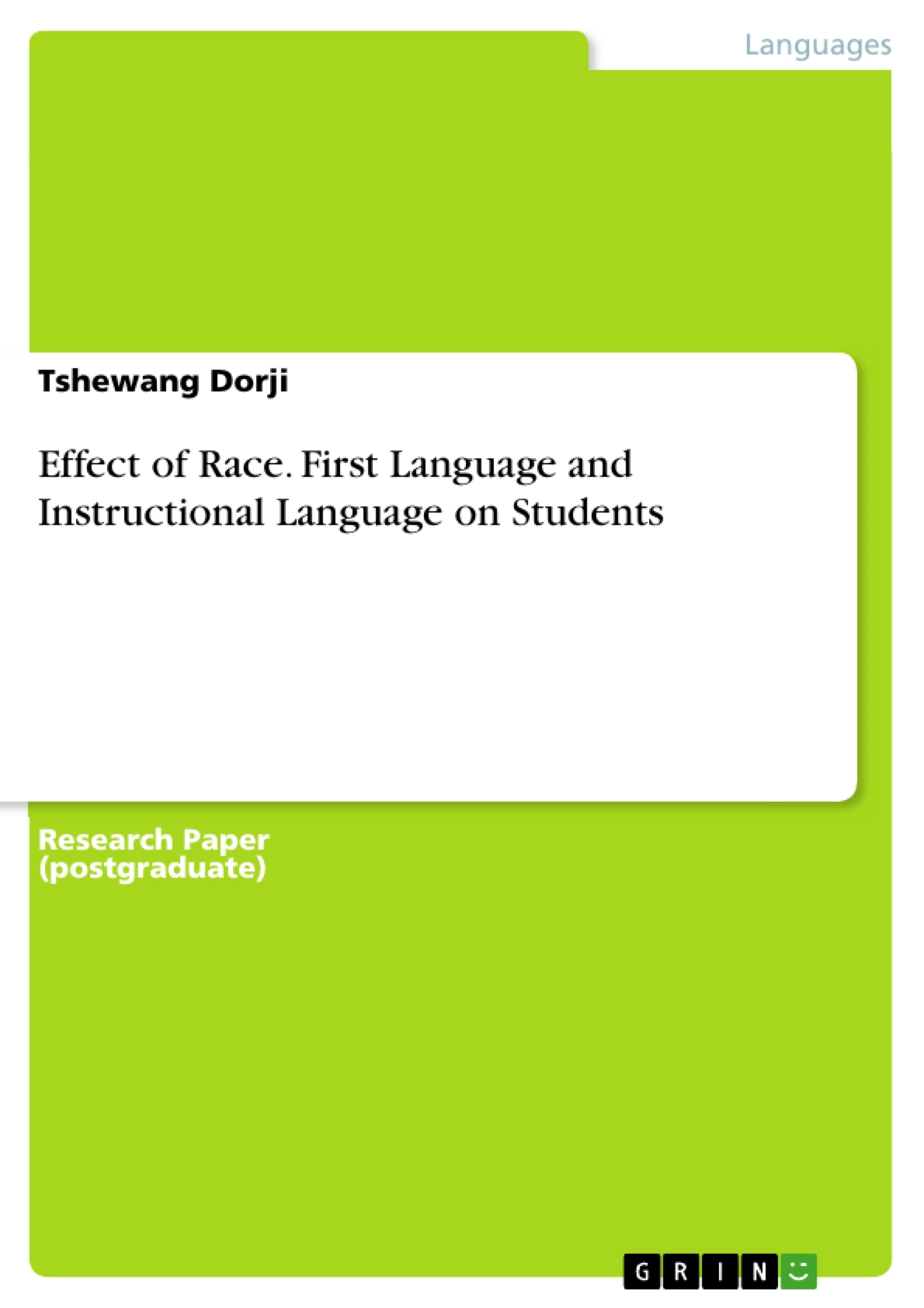Due to the importance of English language proficiency in education, this study looks to examine the relationship between student performance and language. Especially it explores student performance on standardized tests assessing science, the first language the student learned, the language used to teach students in their first and second year of learning science in the U.S., and race. This paper used the National Education Longitudinal Study: 1988/2000 (NELS: 88) database from the National Center for Educational Statistics (NCES, 2002). The main aim of this paper is to sensitize teachers if primary language and language of instruction influences how students perform, it is imperative that teaching be adjusted for students who may not speak English as a primary language in school.
Inhaltsverzeichnis (Table of Contents)
- Background and Introduction
- Present Study
- NELS and participants' description
- Variable description and descriptive
- Model Determination and Plan of Analysis
- Regression Analysis
- Model comparison
- Final Model
- Discussion and Conclusion
- References
Zielsetzung und Themenschwerpunkte (Objectives and Key Themes)
This study examines the relationship between student performance in science and various factors, including language proficiency, first language, and race. The research uses data from the National Education Longitudinal Study: 1988/2000 (NELS: 88) to explore the influence of these factors on standardized test scores. The study aims to determine if there is a significant relationship between these variables and to understand how these factors contribute to achievement gaps in science.
- Influence of first language and language of instruction on science performance
- Impact of race on student achievement in science
- Relationship between English language proficiency and standardized test scores in science
- Exploring the factors that contribute to achievement gaps in science, particularly between different racial groups
- Analyzing the role of family background and socioeconomic factors in student performance
Zusammenfassung der Kapitel (Chapter Summaries)
- Background and Introduction: This chapter introduces the context of the study, highlighting the importance of standardized testing in the U.S. and the significant disparities in student achievement across racial groups. It discusses previous research findings that link race, socioeconomic status, and language proficiency to test score gaps.
- Present Study: This chapter outlines the research objectives and questions of the study, focusing on the relationship between student performance in science, language proficiency, first language, and race. It explains the exploratory nature of the study and its aim to investigate potential relationships without drawing causal conclusions.
- NELS and participants' description: This chapter details the National Education Longitudinal Study: 1988/2000 (NELS: 88) database used for the study. It provides an overview of the dataset and the participants involved in the research.
Schlüsselwörter (Keywords)
This study focuses on the key topics of student performance, standardized testing, science achievement, race, language proficiency, first language, language of instruction, achievement gaps, and socioeconomic factors. The study utilizes the NELS: 88 database and explores the relationship between these factors to understand their influence on student outcomes in science.
- Quote paper
- Tshewang Dorji (Author), 2017, Effect of Race. First Language and Instructional Language on Students, Munich, GRIN Verlag, https://www.grin.com/document/359474



